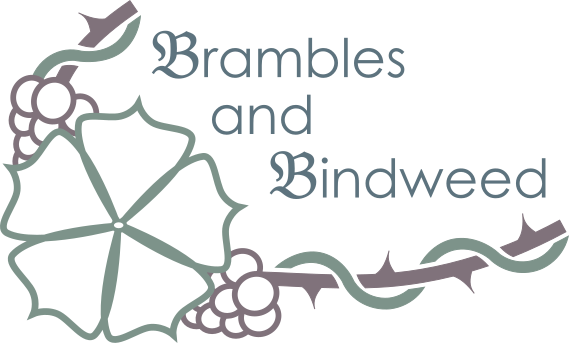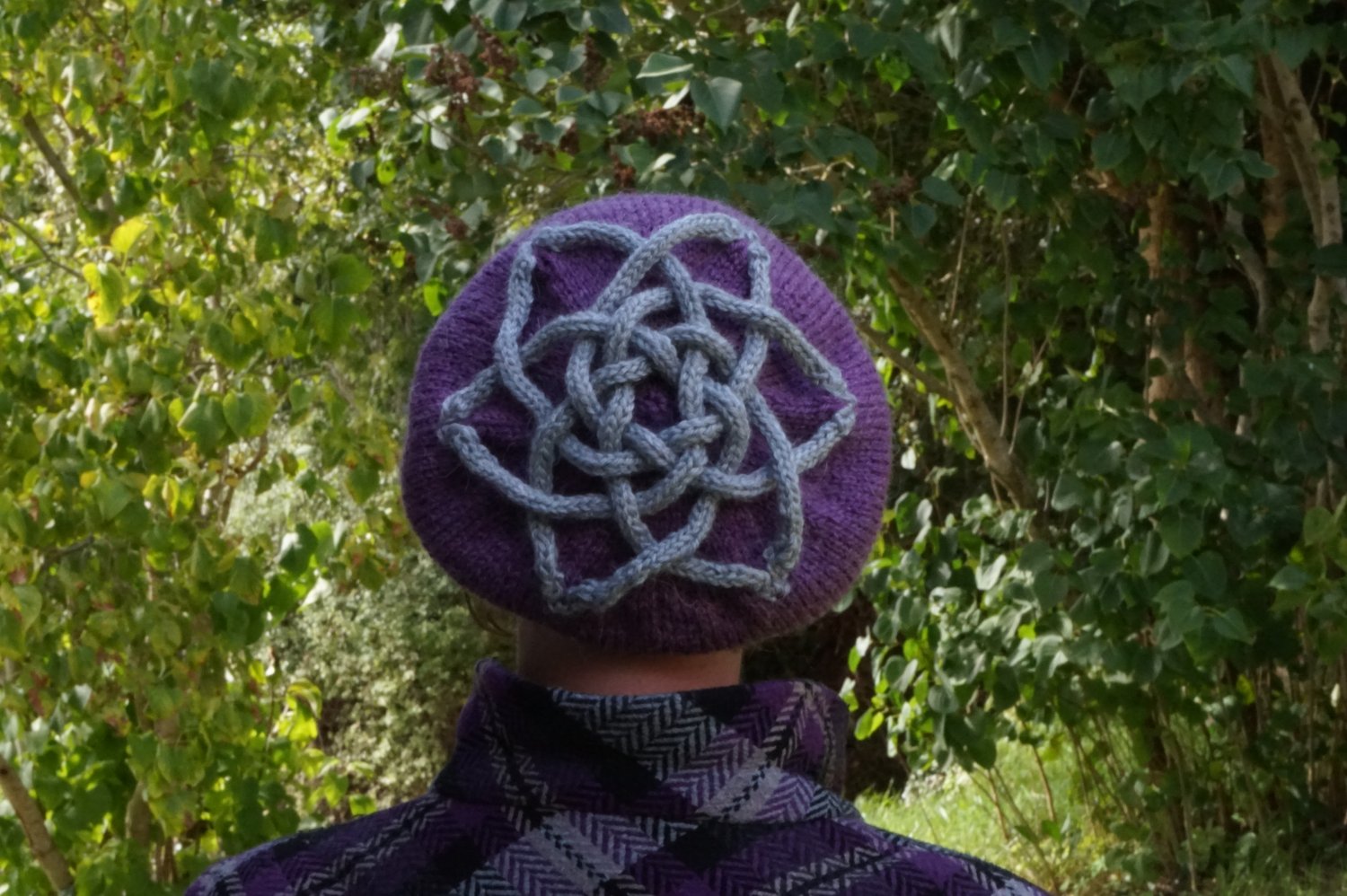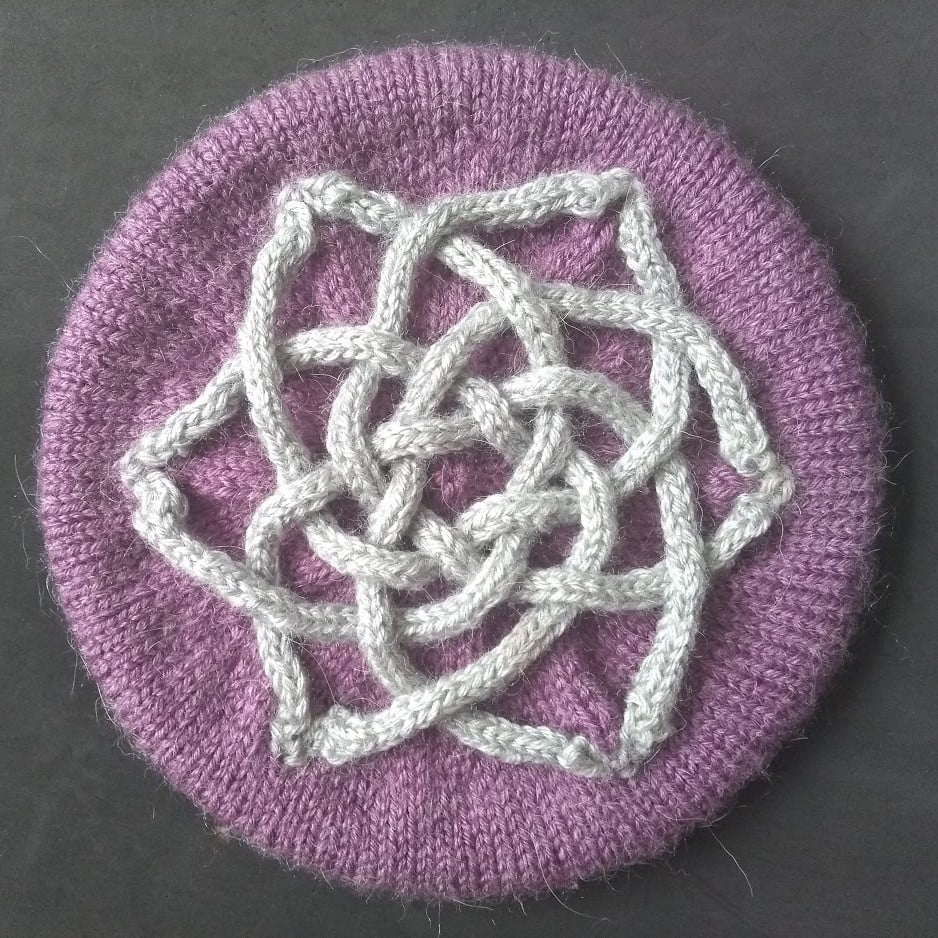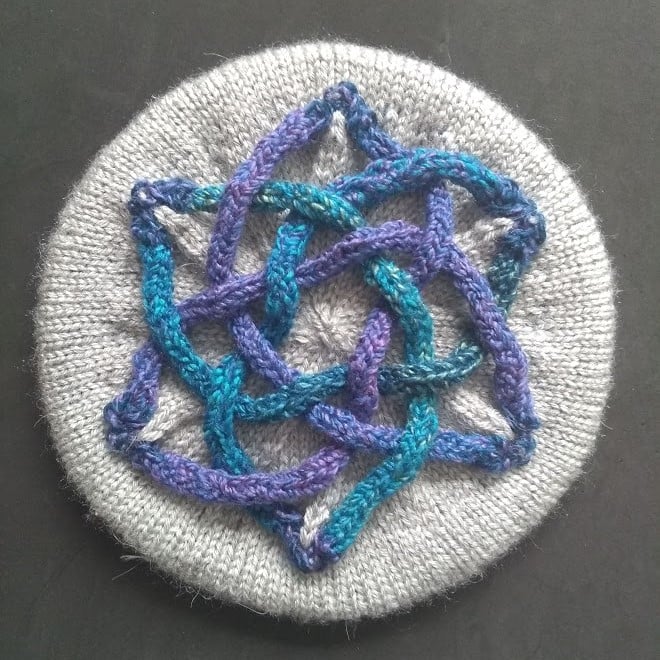Dunelm
On Sale
£3.50
£3.50
Craft: knitting
Suggested yarns: any aran weight yarn. The sample was knitted with James C Brett Aztec Aran.
Tension: 18stitches and 24 rows = 10 cm (4 inches) in stocking stitch.
Needle: 4.0 mm (US 6) and 5.0mm (US 8).
Sizes: Adult to fit 45 [50,55]cm / 18 [20,22] inches.
Techniques: knitting in the round, colour-stranding, i-cord, kitchener stitch, knit, purl, double increases, single decreases.
Longer ago than I care to remember, a friend gave me a book covering the basics of how to design your own celtic knots. It was while I was weaving some crochet strands together that I wondered about the possibilities of using i-cord to make a celtic knot. If placed on a hat, the strands could float over the top, going wherever they most naturally want to lie. This would allow a much more complicated knot in a smaller space than could be achieved by cabling. A beret seemed the perfect shape to show off the interlacing to maximum effect.
The hat itself is a straightforward knit, but the pattern does use a range of techniques (knitting in the round, color stranding, i-cord and kitchener stitch) which may be new to many knitters. It’s a great pattern for dipping your toes in these techniques though (only three stitches to graft at a time, only four rounds of stranded knitting!). The weaving of the knot is quite fiddly - this may not be for everyone. There are two options (easy and hard) included in the pattern. The instructions for the weave are available in the preview, so you can check that this pattern is a good fit for you before purchasing.
I’ve used an acrylic blend for the hat. Acrylic is a great choice for low maintenance, everyday no-nonsense wear. There is just a hint of alpaca mixed in with the acrylic which gives a softness to the yarn to encourage the slouchy shape of the hat. Choose a high contrast color for the i-cords. It would also be a good place to use up some oddments from the inevitable stash.
The strands for the knot are made with i-cords.
The stitches which form the anchor points for the knot are worked in a contrasting color to the rest of the hat. This means that there are a few rounds of stranded colorwork where you will need to catch the floats on the wrong side of the fabric. At the time of writing this pattern, Suzanne Bryan has a wonderful youtube video demonstrating this technique very clearly.
The strands of the knot are grafted together at the end to form a seamless join. These could be sewn together if preferred.
Suggested yarns: any aran weight yarn. The sample was knitted with James C Brett Aztec Aran.
Tension: 18stitches and 24 rows = 10 cm (4 inches) in stocking stitch.
Needle: 4.0 mm (US 6) and 5.0mm (US 8).
Sizes: Adult to fit 45 [50,55]cm / 18 [20,22] inches.
Techniques: knitting in the round, colour-stranding, i-cord, kitchener stitch, knit, purl, double increases, single decreases.
Longer ago than I care to remember, a friend gave me a book covering the basics of how to design your own celtic knots. It was while I was weaving some crochet strands together that I wondered about the possibilities of using i-cord to make a celtic knot. If placed on a hat, the strands could float over the top, going wherever they most naturally want to lie. This would allow a much more complicated knot in a smaller space than could be achieved by cabling. A beret seemed the perfect shape to show off the interlacing to maximum effect.
The hat itself is a straightforward knit, but the pattern does use a range of techniques (knitting in the round, color stranding, i-cord and kitchener stitch) which may be new to many knitters. It’s a great pattern for dipping your toes in these techniques though (only three stitches to graft at a time, only four rounds of stranded knitting!). The weaving of the knot is quite fiddly - this may not be for everyone. There are two options (easy and hard) included in the pattern. The instructions for the weave are available in the preview, so you can check that this pattern is a good fit for you before purchasing.
I’ve used an acrylic blend for the hat. Acrylic is a great choice for low maintenance, everyday no-nonsense wear. There is just a hint of alpaca mixed in with the acrylic which gives a softness to the yarn to encourage the slouchy shape of the hat. Choose a high contrast color for the i-cords. It would also be a good place to use up some oddments from the inevitable stash.
The strands for the knot are made with i-cords.
The stitches which form the anchor points for the knot are worked in a contrasting color to the rest of the hat. This means that there are a few rounds of stranded colorwork where you will need to catch the floats on the wrong side of the fabric. At the time of writing this pattern, Suzanne Bryan has a wonderful youtube video demonstrating this technique very clearly.
The strands of the knot are grafted together at the end to form a seamless join. These could be sewn together if preferred.








